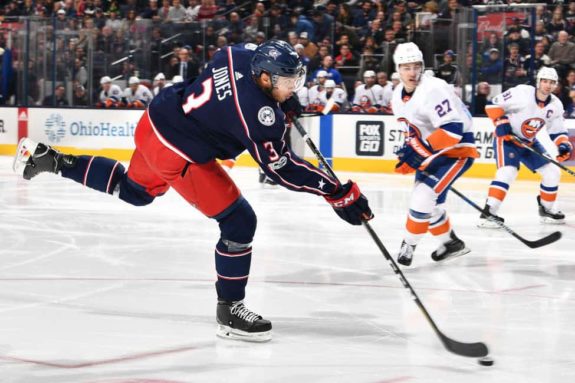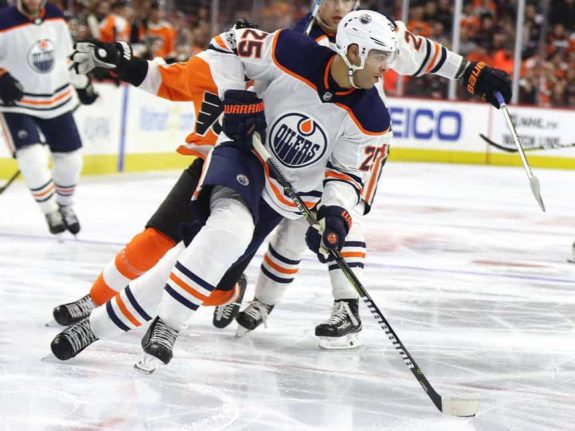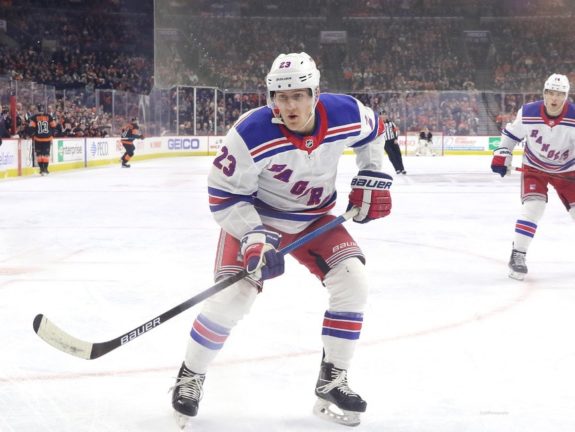The NHL’s flat salary cap, set at $81.5 million, limited the financial flexibility of general managers this offseason. However, top defensemen Seth Jones (Chicago Blackhawks), Dougie Hamilton (New Jersey Devils), Cale Makar (Colorado Avalanche), Zach Werenski (Columbus Blue Jackets), and Darnell Nurse (Edmonton Oilers) still signed lucrative contracts with average annual values (AAV) of at least $9 million.
GMs typically make the most significant commitment, in terms of both contract length and overall monetary value, to their first-line centers. They often hesitate to hand out lengthy financial contracts to goaltenders, given the unpredictable nature of the game’s most important position. Only truly exceptional wingers can command top-of-the-line money. However, if this offseason is any indication, top-pairing defensemen have become franchise cornerstones who need to be paid accordingly.
Blackhawks Land Jones; Devils Ink Hamilton
Jones continued the trend of star players making unceremonious exits from the Blue Jackets by requesting a trade this offseason. The 26-year-old has built a reputation as a durable workhorse, and he finished no lower than seventh in average ice time (ATOI) among defensemen in three consecutive seasons. But his reported preferred destinations limited Columbus’s options in trade talks. The Blackhawks acquired Jones and three picks for former eighth-overall pick Adam Boqvist and two additional picks. They then inked Jones to an eight-year, $76 million ($9.5 million AAV) contract extension.

The Devils signed Hamilton as an unrestricted free agent in July. The former Carolina Hurricane is considered one of the best puck-moving defensemen in the NHL. His ability to drive the play, as measured by Evolving-Hockey’s RAPM model, has brought a “more positive impact on his team’s shot attempt differential and expected goal differential” than any other defenseman in the league (from ‘Would Dougie Hamilton fit with the Flyers? Evaluating the soon-to-be free agent and if he should be a target,’ The Athletic, 6/18/21). The Devils committed seven years and $63 million ($9 million AAV) to the 28-year-old, who will now play for his fourth team in 10 seasons.
Retained Defensemen: Cale Makar, Zach Werenski, Darnell Nurse
Makar became a superb puck-moving quarterback for the Colorado Avalanche’s potent offense in 2020-21. The 22-year-old entered the offseason as a restricted free agent on a team with legitimate cap concerns. Colorado allowed Vezina finalist Philipp Grubauer to walk away as an unrestricted free agent, in part to prioritize the six-year, $54 million ($9 million AAV) commitment to Makar.
The high-end deals given to Jones and Hamilton were somewhat due to the nature of bidding wars for the best available players that occur every offseason. Makar proved himself to be one of the top defensemen in the NHL during his entry-level contract and garnered a salary among the league’s best entering his prime years. The deals offered to Werenski and Nurse, however, were the most surprising and the most influential in determining future contract value for top-pairing defensemen.

Werenski has developed into a valuable defenseman at age 24 and finished eighth in Norris Trophy voting following the 2019-20 season. His Corsi for (CF%) has decreased in each of his five NHL seasons, but his usage by the Blue Jackets and the team surrounding him influenced those numbers. He signed a six-year contract extension beginning in 2022-23 with an AAV of $9.58 million, higher than any blueliner signed this offseason. During negotiations, the Blue Jackets likely had to consider Jones’ departure and the need to commit to a young, talented player who still wants to stay in Columbus.
In the most surprising deal of the summer, Nurse was re-signed by the Oilers on an eight-year, $74 million deal ($9.25 million AAV) deal. He is not a top-tier offensive defenseman, but he finished seventh in Norris Trophy voting in 2020-21. The value of his two-way game and the inflation caused by the contracts offered to the four previously mentioned defensemen earlier in the summer led to the expensive deal.
The Market for NHL Defensemen
The Los Angeles Kings signed Drew Doughty to an eight-year, $88 million deal ($11 million AAV) in 2018. The San Jose Sharks then signed Erik Karlsson to an eight-year, $92 million contract ($11.5 million AAV) in 2019. Neither team is still getting good value from these deals, as both defensemen have taken a step back since their elite-level play at the height of their prime. The market for defenders has still remained incredibly high even following these two misguided financial investments, and it will likely continue to increase next offseason.

The five biggest contracts given to defensemen this offseason will increase the asking price for the NHL’s best blueliners next season, and make top-pair, puck-moving defensemen even more coveted throughout the league. Adam Fox of the New York Rangers joined Bobby Orr as one of two defensemen to win the Norris in his second NHL season in 2020-21, and his entry-level deal will expire after the 2021-22 season. His new contract will almost certainly exceed the value of any defenseman signed this offseason, and some projections have the estimated value higher than Karlsson’s number for the biggest contract ever signed by a defenseman. Charlie McAvoy of the Boston Bruins and Morgan Rielly of the Toronto Maple Leafs will also seek lucrative contracts next offseason.
The growing demand for top-pairing defensemen will only increase now that the league has expanded to 32 teams. Given the uncertainty of the timeline surrounding the flat salary cap, general managers will have to get creative in finding ways to lock up their best players while surrounding them with adequate talent. If the top offseason contracts signed by defensemen are any indicator, that will not be an easy feat.